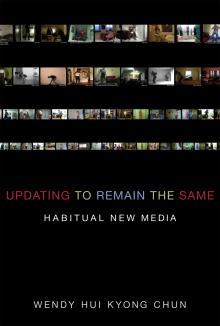What do you think?
Rate this book


264 pages, Hardcover
Published May 27, 2016
This book has argued that what matters most is what and how things linger.Because we are all entertainers now—forever dancing for the rest of the world or else silent ghosts haunting the web—what matters isn’t that we are flawless performers but admittedly fallible and eminently forgivable: :
Technoculture’s unendingly circulating information stream casts doubt on the value of this content. This is the creepy part of making oneself seen: once we offer ourselves up, once we are displayed on the screens of technoculture, we are as trivial as everything else.What matters is context, kindness, understanding. What matters is to be viewed as a person to be heard, not as content to be consumed. Not shadow-selves, but selves: not “just online,” but as projections of who we are. A person, not content, or else you truly are illusory.
Technoculture’s unendingly circulating information stream casts doubt on the value of this content. This is the creepy part of making oneself seen: once we offer ourselves up, once we are displayed on the screens of technoculture, we are as trivial as everything else.The erasure of personhood as we become consumable content, of silence or infamy shame or invisibility, is not a required state. Personhood—respect for an online presence—doesn’t mean tethered digital footprints or even a harkening back to the halcyon days of an open Usenet. Rather than struggling against the benefits or submitting to the inadequacies of the present status, the habits surrounding the networked-now can be reshaped.
Although goals can be satisfied in various ways, there is only one way to satisfy a habit: by repeating it exactly.After a generation of watching images on a screen and being told over and over, “This isn’t real, this is just entertainment,” the habit of dismissing the flickering shadows projected into our lives has become our reality. We don’t believe what we see, nor do we even believe what we say—the always-on nature of the network means your “brand” can never waver; always be riffing, always be joking, say whatever gets the most likes. If a tree falls in the woods and no one is around to retweet it, does it make an impact?
We must develop new habits of connecting that disrupt the reduction of our interactions into network diagrams that can be tracked and traced.Public engagement, rather than corporate estrangement, is the only hope for a networked future that won’t leave everyone in the dark.